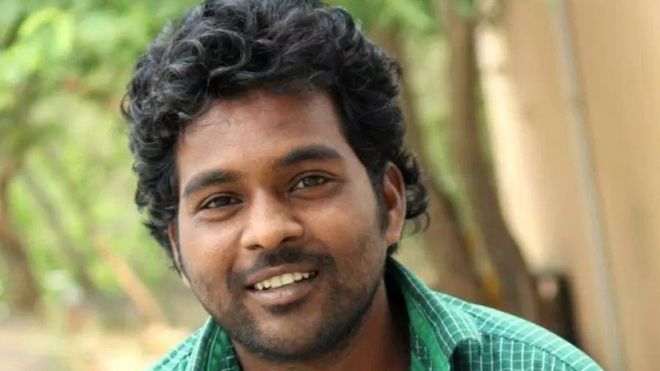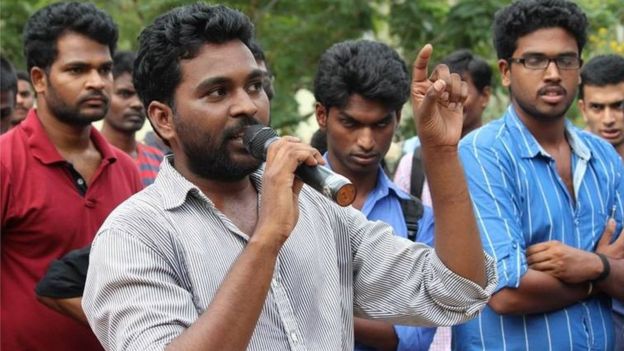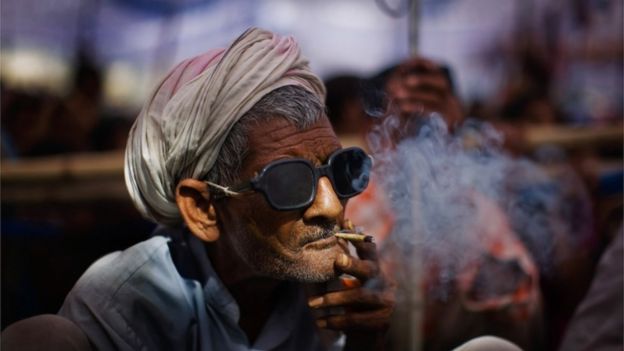It is an embarrassment to most Indians except the radical Hindus among us, that they are making the killer of Mahatma Gandhi a hero, shame on them. It's like erecting statues in the state capitals of Lee Harvey Oswald, or celebrating Lincoln's Killer.
Mike Ghouse
A statue for Nathuram Godse by Salil Tripathi
A Godse with a gun near a Gandhi statue will remind us that regardless of the power of good, there will always be evil within every society.

Photo: Wikimedia Commons
Mike Ghouse
A statue for Nathuram Godse by Salil Tripathi
A Godse with a gun near a Gandhi statue will remind us that regardless of the power of good, there will always be evil within every society.

The local authorities in Meerut have sealed the spot in that town where activists of the Hindu Mahasabha want to erect a statue commemorating Nathuram Godse. Lacking any sense of irony, the Hindu Mahasabha wants 30 January to be called shourya divas, or the day of courage.
The courage being what Godse showed when he murdered Mohandas Gandhi that day in 1948. The activists have chosen to act now, in 2015, when a government, which shares much of the activists’ ideology, is in power at the centre. Other statues are planned in Delhi, Ambala (where Godse was executed), and, according to reports, 14 other places in India.
The Madras high court dismissed a public interest petition by a Gandhian who wanted to put a stop to the charade because it hurt his—and others’—feelings.
Anticipating trouble on Friday, officials have invoked a colonial-era law, which Gandhi and satyagrahis used to defy during the freedom struggle, to stop the plans of the assassin’s worshippers. Politicians of various hues will likely wrap themselves in Gandhian homespun clothes, and if passions run high, things may turn violent. But Gandhi doesn’t need lumpen elements to defend his ideas.
The last time Godse and Hindu Mahasabha leaders were cheered was, inevitably, when the Bharatiya Janata Party was in power.
Think of the unveiling of a portrait commemorating Vinayak Savarkar in Parliament in 2003, or the staging of the Marathi play, Mi Nathuram Godse Boltoy (This is Nathuram Godse speaking, based on Godse’s court statement) during the Vajpayee years. (It was banned when first staged in 1997, but allowed in 2001).
Godse’s fans have created a subterranean cult that portrays him as a misunderstood patriot. The state has overreacted by banning the statement and the play based on it, giving such myths wider currency. Godse’s statement is accessible on the Internet. In that speech, Godse coldly laid out his worldview, explaining coldly why he killed Gandhi. It showed little remorse and it was written with posterity in mind. He wanted to be remembered as a martyr for the Hindu cause.
The young Indian Republic panicked and Godse’s speech acquired a samizdat status, a netherworld aura. Its suppression made it seem as though it was worthy, and that helped keep alive the deluded idea that Godse was a patriot.
I remember during my time at college at least two students who thought so. One looked up to Godse (but then he also called Hitler a great, misunderstood man), and the other’s home had a portrait of Godse with a sandalwood garland around it.
So here’s a thought for today: let there be a Godse statue. Not one, but many. Let Godse’s statues be placed near the pedestal wherever Gandhi statues stand—the inspiring Dandi March statue where Sardar Patel Road meets Mother Teresa Crescent behind the Rashtrapati Bhavan in Delhi, the impressive statue near Mantralaya in Mumbai, the meditative statue at the Juhu beach, and the many other statues and busts that adorn India’s buildings and pedestals, lending dignity to India’s public squares and places.
But here’s the caveat—each statue should show Godse with a gun in his hand. Let that gun be pointed towards Gandhi. Let it continue to remind India, day after day, not only about the bravery of the warrior without a weapon, and the cowardice of the assassin with a gun.
Gandhi gave his life trying to get humanity to shun violence.
In 1922, he suspended the civil disobedience movement when freedom fighters burned down a police station in Chauri Chaura, killing several policemen.
Then again in 1946, when Hindu-Muslim violence erupted in Bengal after the Muslim League had called for a Direct Action Day, Gandhi went to the storm’s epicentre, Noakhali, and walked barefoot between November 1946 and March 1947, covering 47 villages, never staying at a place for more than one or two nights, and calmed the region. Gandhi was living out the words of Rabindranath Tagore: Jodi tor dak shune keu na ashe tobe ekla chalo re, inspiring generations: “to walk alone, even if nobody listens to your call.”
Across India and throughout the world, the statues of that frail man walking with his stick, continue to stir today.
Let us then remember the fanatic, too, who could speak only with bullets to a weaponless old man whose courage lay in non-violence.
Even George Orwell, sceptical of saints and the self-righteous, was moved to write when Gandhi died: “Regarded simply as a politician, and compared with the other leading political figures of our time, how clean a smell he has managed to leave behind.”
A Godse with a gun near a Gandhi statue will remind us that regardless of the power of good, there will always be evil within every society. There is no single path to overcome that, but the one that Gandhi took is a good one to walk on, and you won’t be alone.
Salil Tripathi is a writer based in London.
Your comments are welcome at salil@livemint.com. To read Salil Tripathi’s previous columns, go towww.livemint.com/saliltripathi
Follow Mint Opinion on Twitter athttps://twitter.com/Mint_Opinion












